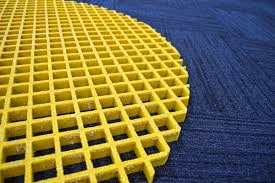loading...
- No. 9, Xingyuan South Street, Dongwaihuan Road, Zaoqiang County, Hengshui, Hebei, China
- admin@zjcomposites.com
- +86 15097380338
- Welcome to visit our website!
Advanced Composite Materials for Strengthening Structures with FRP Reinforcement Bars
The Role of FRP Reinforcement Bars in Modern Construction
In recent years, fiber-reinforced polymer (FRP) reinforcement bars have gained significant traction in the construction industry. As a modern alternative to traditional steel reinforcement bars (rebars), FRP bars offer numerous advantages, making them an appealing option for civil engineers and builders alike. This article explores the properties, benefits, and applications of FRP reinforcement bars in today’s construction landscape.
FRP reinforcement bars are composed of a polymer matrix strengthened with fibers, typically glass, carbon, or aramid. This unique composition lends FRP bars several advantageous properties. One of the most notable features of FRP is its high strength-to-weight ratio. Compared to steel, FRP bars are significantly lighter, making them easier to handle and install. This lightweight nature does not compromise their strength; in fact, FRP bars can provide comparable or even superior tensile strength in certain applications.
The Role of FRP Reinforcement Bars in Modern Construction
The non-conductive properties of FRP reinforcement bars are also noteworthy. With their ability to resist electrical current, FRP bars are ideal for applications in areas where electromagnetic interference is a concern, such as in electrical substations or around sensitive electronic equipment. This feature further exemplifies the versatility of FRP as a construction material.
frp reinforcement bars

In terms of environmental impact, FRP bars provide a more sustainable alternative to traditional materials. The production of steel is energy-intensive and often results in high carbon emissions. In contrast, the manufacturing process for FRP can be less harmful to the environment, and the longevity of FRP bars contributes to their sustainability. Additionally, many FRP products are designed to be recyclable, further reducing their ecological footprint.
The applications of FRP reinforcement bars in construction are diverse. They are increasingly used in infrastructural projects such as bridges, tunnels, and parking structures. Their lightweight nature facilitates easier transportation and installation, making them an ideal solution for projects with tight timelines. Furthermore, FRP bars are utilized in rehabilitation work, where they can be added to existing structures to enhance strength without significantly increasing weight loads.
Despite their many advantages, the adoption of FRP bars in construction is not without challenges. The initial cost of FRP can be higher than that of traditional steel, which can deter some builders. Additionally, the standards and codes for using FRP in construction are still evolving, necessitating further research and development to ensure widespread acceptance in the industry.
In conclusion, FRP reinforcement bars represent a significant advancement in construction materials, offering high strength, corrosion resistance, and a lower environmental impact compared to traditional steel bars. As the construction industry continues to seek sustainable solutions and innovative approaches, FRP bars are likely to play an increasingly pivotal role in shaping the future of infrastructure development. With ongoing advancements in materials science and engineering practices, the full potential of FRP reinforcement bars will continue to unfold, leading to safer, more durable, and environmentally friendly structures.
-
The Rise of FRP Profiles: Strong, Lightweight, and Built to LastNewsJul.14,2025
-
SMC Panel Tanks: A Modern Water Storage Solution for All EnvironmentsNewsJul.14,2025
-
GRP Grating: A Modern Solution for Safe and Durable Access SystemsNewsJul.14,2025
-
Galvanized Steel Water Tanks: Durable, Reliable, and Ready for UseNewsJul.14,2025
-
FRP Mini Mesh Grating: The Safer, Smarter Flooring SolutionNewsJul.14,2025
-
Exploring FRP Vessels: Durable Solutions for Modern Fluid HandlingNewsJul.14,2025
-
GRP Structures: The Future of Lightweight, High-Performance EngineeringNewsJun.20,2025
